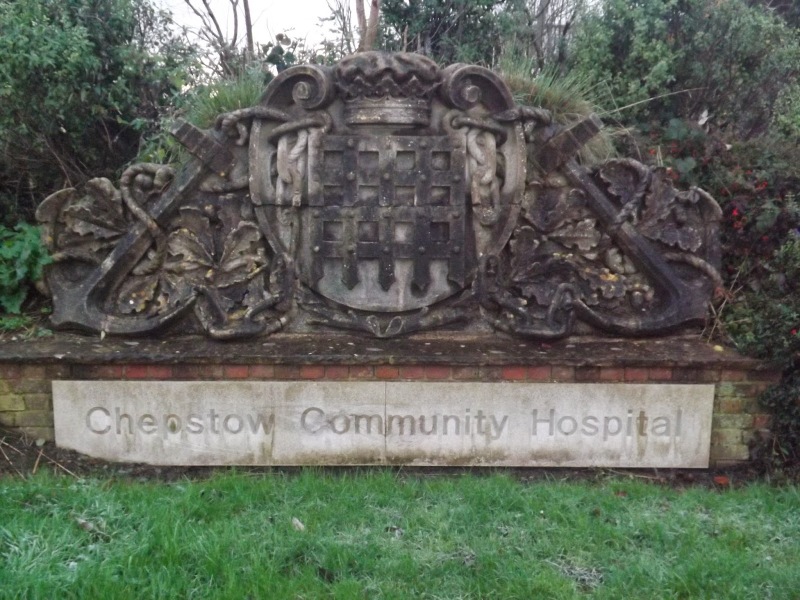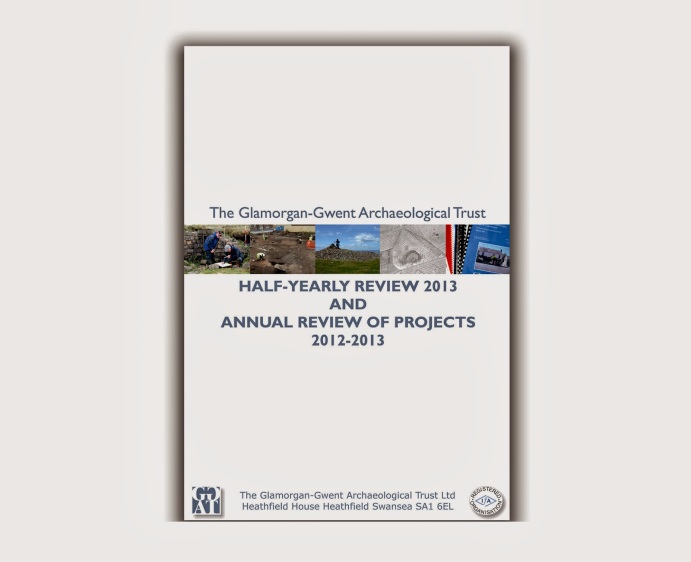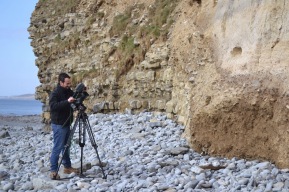It has long been established that the Roman Army constructed a fort at Penydarren (c.AD75), Merthyr Tydfil, to protect the auxiliary unit of troops (normally about 500 men) stationed there. This fort was one of a network of auxiliary forts which were usually positioned between fifteen and twenty miles apart. These forts were probably constructed during the governorship of Sextus Julius Frontinus following the establishment of a new base at Caerleon, or Isca Augusta, for Legio II Augusta (The Second Augusta Legion). The purpose of the auxiliary unit was to garrison forts in recently subdued areas, defend the frontiers, maintain order and protect supply routes.
The first evidence for Roman occupation in Merthyr Tydfil was noted in 1786 during the construction of Penydarren House for the Iron Master Samuel Homfrey when both Roman bricks and tessellated pavement (mosaic) were revealed. Later, between 1902 and 1904 during the preparatory groundworks for construction of the Merthyr Tydfil Athletics Club track and later football ground, the remains of a Roman granary, a building with a hypocaust system (Roman central heating) and a water-well were discovered. This was the first time that the site was considered to be that of a Roman fort, following the examination of the site by Dr F Haverfield of Oxford University. Rescue excavations were later undertaken in 1957 by Dr Brenda Heywood from the University of Cardiff, supported by university students and pupils from a local school. A corner of the forts defences was excavated, revealing a rampart that consisted of a clay and turf bank 8.25m wide that possibly stood to height of 1.6m above a stone base. This defence was supported by two ditches 3.96 and 3.05m wide respectively, separated by a berm at 2.74m wide. In addition, a small section of possible via sagularis (the perimeter road running behind the rampart on the inside) was found within the east rampart and the remains and traces of two ovens in the intervallum (the area found between perimeter road and rampart). From the excavation and its results, it has been postulated that the fort undertook a second phase of building and was occupied until c AD 140.
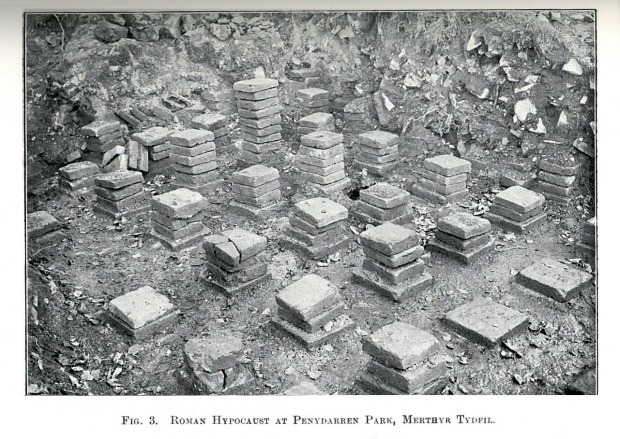
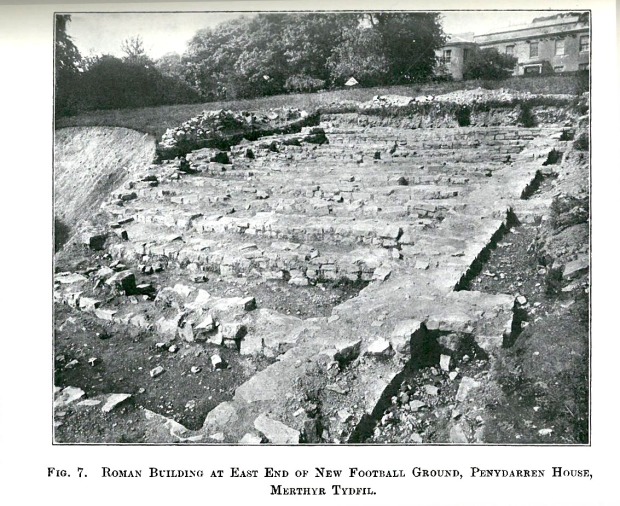
Civilian settlement (vicus) and industry (iron working) can often be associated with forts of this type. Outside of the fort at Penydarren the remains of a bathhouse and evidence of a small cemetery (three Roman cremation urns) had been discovered, but little else. That is until local historian and metal detectorist, Mr Anthony “Shirley” Thomas noticed unusual looking rectangular cropmarks on the aerial photographs of the land surrounding Merthyr Tydfil. Mr Thomas brought these photographs to the attention of the Glamorgan-Gwent Archaeological Trust who confirmed that these cropmark could indeed be Roman, most likely associated with Roman metal working in the area, but further work is required to confirm the discovery. Rather excitingly, it now seems possible that Merthyr Tydfil’s origins as an Iron Town could stretch back some 2000 years to the Roman period.
Merthyr Tydfil Leisure Trust, working in partnership with Cadw, Merthyr Tydfil County Borough Council and the Glamorgan Gwent Archaeological Trust are planning to investigate the cropmarks first noticed by Mr Thomas as part of a community archaeology project. If you would like to get involved, learn more about the project and help discover the origins of Roman Merthyr Tydfil and learn how archaeologists investigate and record archaeological sites then please contact the Merthyr Tydfil Leisure Trust for further information.
 Come along to the first ‘Finding Our History’ training session – Landscape Detective
Come along to the first ‘Finding Our History’ training session – Landscape Detective 




